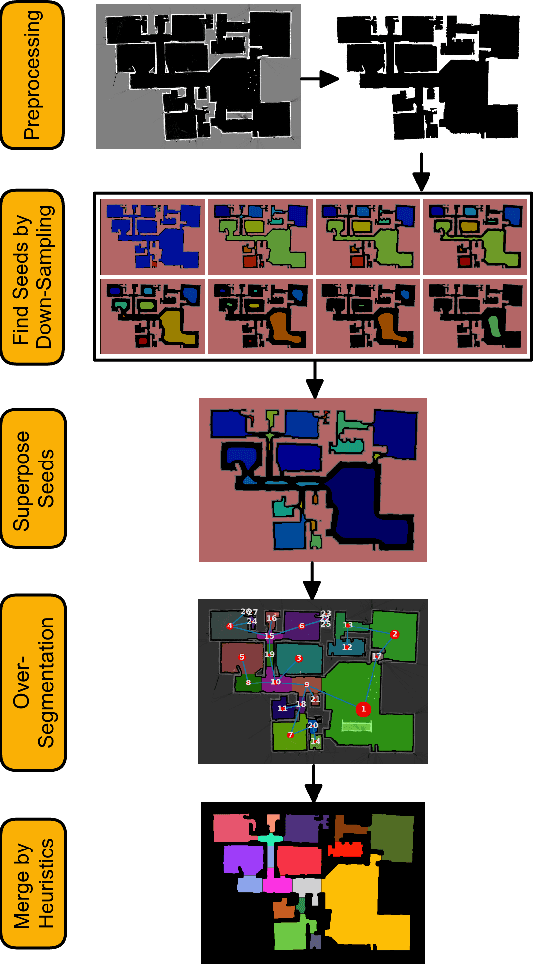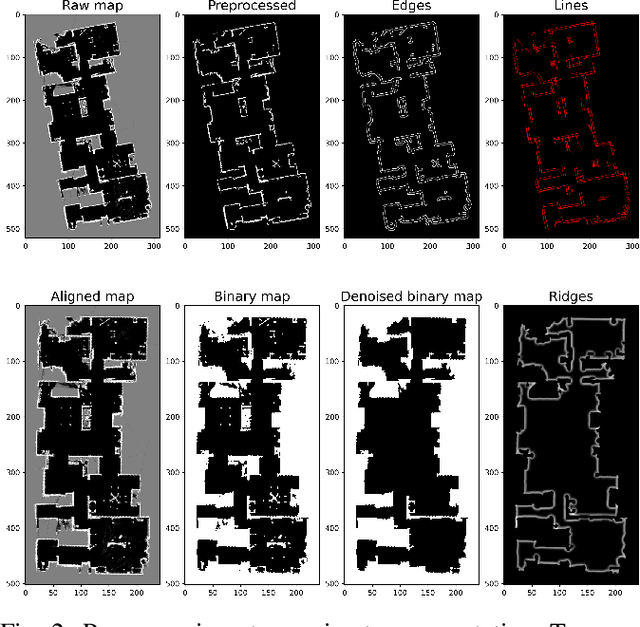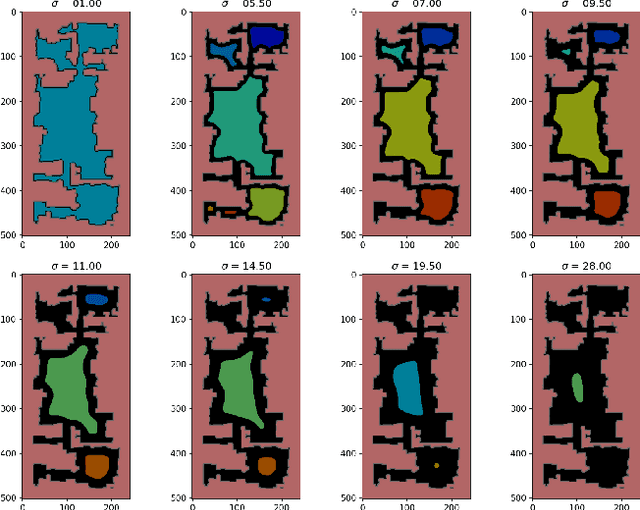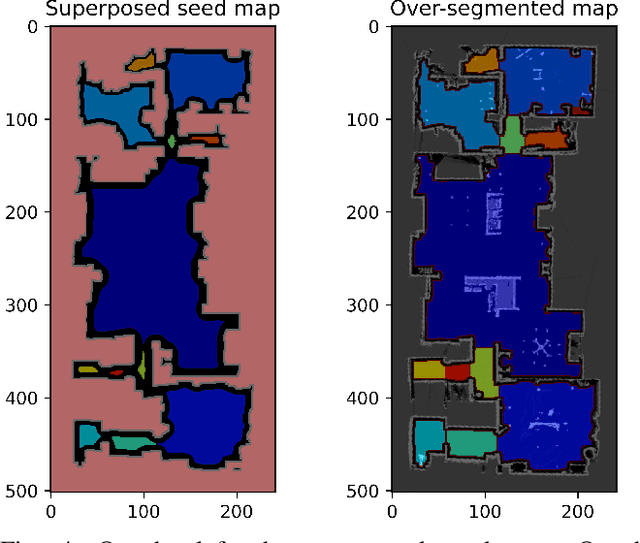Kiran Mohan
2D Floor Plan Segmentation Based on Down-sampling
Mar 24, 2023



Abstract:In recent years, floor plan segmentation has gained significant attention due to its wide range of applications in floor plan reconstruction and robotics. In this paper, we propose a novel 2D floor plan segmentation technique based on a down-sampling approach. Our method employs continuous down-sampling on a floor plan to maintain its structural information while reducing its complexity. We demonstrate the effectiveness of our approach by presenting results obtained from both cluttered floor plans generated by a vacuum cleaning robot in unknown environments and a benchmark of floor plans. Our technique considerably reduces the computational and implementation complexity of floor plan segmentation, making it more suitable for real-world applications. Additionally, we discuss the appropriate metric for evaluating segmentation results. Overall, our approach yields promising results for 2D floor plan segmentation in cluttered environments.
Delving Deeper into MOOC Student Dropout Prediction
Feb 21, 2017



Abstract:In order to obtain reliable accuracy estimates for automatic MOOC dropout predictors, it is important to train and test them in a manner consistent with how they will be used in practice. Yet most prior research on MOOC dropout prediction has measured test accuracy on the same course used for training the classifier, which can lead to overly optimistic accuracy estimates. In order to understand better how accuracy is affected by the training+testing regime, we compared the accuracy of a standard dropout prediction architecture (clickstream features + logistic regression) across 4 different training paradigms. Results suggest that (1) training and testing on the same course ("post-hoc") can overestimate accuracy by several percentage points; (2) dropout classifiers trained on proxy labels based on students' persistence are surprisingly competitive with post-hoc training (87.33% versus 90.20% AUC averaged over 8 weeks of 40 HarvardX MOOCs); and (3) classifier performance does not vary significantly with the academic discipline. Finally, we also research new dropout prediction architectures based on deep, fully-connected, feed-forward neural networks and find that (4) networks with as many as 5 hidden layers can statistically significantly increase test accuracy over that of logistic regression.
 Add to Chrome
Add to Chrome Add to Firefox
Add to Firefox Add to Edge
Add to Edge